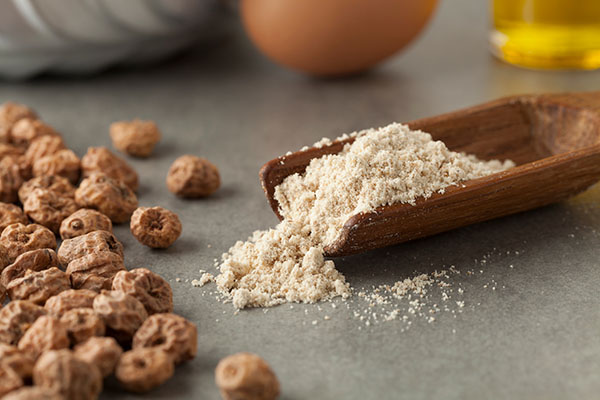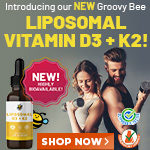
Diets get a bad rap, especially among those who don’t really understand how to eat healthily. Going on a diet doesn’t mean starving yourself or depriving yourself of your favorite foods. Instead, following a balanced diet involves eating different kinds of healthy foods to boost your overall well-being.
One such eating plan is the Flexitarian diet. This is a diet designed for those who like eating meat but also want to add more fruits and veggies to their daily meals.
Flexitarian diet? What’s that?
According to nutritionist Dr. Dawn Jackson Blatner, the Flexitarian diet involves eating a lot of plant-based foods, with the occasional serving of meat.
Blatner based the Flexitarian diet on her own struggles to balance healthy food and eating meat. There’s no denying that following a plant-based diet can help lowers diabetes, heart disease and cancer risk, but Blatner herself has struggled with vegetarianism since she also liked eating meat.
Instead of depriving herself of the occasional meal with meat, Blatner decided to eat more fruits and veggies and less meat, ensuring that she gets the nutrients she needs from both.
Blatner coined the term “Flexitarian” by combining the words flexible and vegetarian in her 2009 book “The Flexitarian Diet: The Mostly Vegetarian Way to Lose Weight, Be Healthier, Prevent Disease, and Add Years to Your Life.” This flexible diet incorporates a lot of beans, nuts, produce and whole grains, but “it’s not anti-meat.”
Is the Flexitarian diet good for you?
10 years after Blatner introduced the Flexitarian diet, the term has grown in popularity. The word “flexitarian” was even added to the Oxford English Dictionary in 2014.
Additionally, the flexible diet plan often ranks near the top of U.S. News & World Report’s best overall diets. The Flexitarian diet is a good starting point for someone who’s curious about eating healthier but craves meat. It’s also more effective, unlike fad diets.
According to a 2017 review, people who follow a semi-vegetarian diet had lower body weight than those who regularly ate meat. The same group also had a lower incidence of metabolic disease and lowered risk for Type 2 diabetes.

How often can you eat meat while on the Flexitarian diet?
You can be as strict or as flexible as you want to be while on the Flexitarian diet. Start by allowing yourself up to 28 ounces of lean meat or poultry per week. As you get used to eating more greens and less meat, limit yourself to only three ounces of meat up to three times a week.
If you want to lose weight, follow a Flexitarian diet that provides around 1,500 calories per day. Curious about the Flexitarian diet? Below are tips for beginners, advanced and expert dieters.
Beginner
Since you have 21 meals a week, start by eating seven meatless meals a week. If you want bacon for breakfast, make sure your lunch and dinner doesn’t have any meat.
Advanced
Once you get used to eating less meat, plan at least 14 meatless meals a week.
Expert
Expert dieters only consume meat six times per week or less. You can also go entirely meatless for weeks and treat yourself to a steak on special occasions.
To make your “cheat day” more special, save them for “meaningful meat moments” like a rare family barbecue or during the holidays.
Rethink your eating habits
Start the Flexitarian diet by making healthy changes to your eating habits.
Re-portion your plate
While following this diet, it’s best to think of meat as the side dish instead of your main course. Instead of serving a large steak in the traditional American style, prepare meat that’s only a quarter of the plate.
Fill another quarter of your plate with whole grains, then fill the remaining 50 percent with veggies.
Find healthier versions of your favorites
It’s hard to find a vegetarian replacement for a juicy steak, but you can opt for veggie-filled versions of meat-based favorites.
For example, you can make an edamame or tofu stir fry instead of a chicken stir-fry. Just remember to replace one ounce of meat with 1/4 ¼ cup of beans.
Blatner also advised against store-bought faux-meat burgers which may contain harmful ingredients. Instead, you should learn how to make veggie burgers from scratch to ensure that you’re eating burgers made with fresh and healthy ingredients.
Try cooking with new and nutritious ingredients
The Flexitarian diet is meant to add more delicious and healthy ingredients to your pantry, not deprive you of the foods you want to eat. While you’re looking for new recipes to try, check out vegetarian versions of your favorite meals.
In time, you’ll find lots of recipes that are good for you and also taste amazing. It’s a win-win for your appetite and your diet.

Mushroom-quinoa veggie burgers with secret sauce
This veggie burger recipe includes savory mushrooms, fiber-rich quinoa and a delicious sauce.
Ingredients for 4 servings:
- 1 large portobello mushroom, gills removed, roughly chopped
- 4 whole-wheat hamburger buns, toasted
- 4 tomato slices
- 4 thin slices of red onion
- 2 leaves green-leaf lettuce, halved
- 1 cup no-salt-added canned black beans, rinsed
- 1/2 cup of cooked quinoa
- 1/4 cup of old-fashioned rolled oats
- 3 tablespoons of homemade vegan mayonnaise, divided (Recipe below)
- 2 tablespoons unsalted creamy almond butter
- 1 tablespoon of extra-virgin olive oil
- 1 tablespoon of ketchup
- 1 teaspoon of Dijon mustard
- 1 teaspoon of ground pepper
- 3/4 teaspoon of garlic powder, divided
- 3/4 teaspoon of smoked paprika
- 1/2 teaspoon of salt
Preparation:
- Place the mushrooms, black beans, almond butter, one tablespoon of vegan mayonnaise, pepper, paprika, half a teaspoon of garlic powder and salt in a food processor. Pulse and stop once or twice to scrape down the sides. You’re done once you have a coarse mixture that holds together when pressed. Transfer the mixture to a bowl, add the quinoa and oats, then stir well to combine. Refrigerate for one hour.
- Whisk the ketchup, mustard and the remaining two tablespoons of vegan mayonnaise and one-fourth teaspoon of garlic powder in a small bowl until smooth.
- Shape the mushroom mixture into four patties.
- Heat the oil in a large grill pan or nonstick skillet over medium-high heat. Fry the patties and cook until golden and beginning to crisp or for four to five minutes. Carefully flip and cook until golden brown or for two to four more minutes.
- Place the burgers on buns then add the special sauce, lettuce, tomato and onion before serving.
Vegan mayo
This recipe for vegan mayo only needs six ingredients! Even though the recipe is vegan, you’ll have very creamy and tangy mayo that will go well with mushroom-quinoa veggie burgers.
Ingredients:
- 1 cup (240 ml) of avocado oil
- 1/2 cup (120 ml) of unsweetened soy milk
- 1 tablespoon of maple syrup
- 1 tablespoon of olive oil
- 2 teaspoons of white vinegar
- 1/2 teaspoon of salt
Preparation:
- Combine all of the ingredients in a bowl or measuring jug. Use an immersion or handheld blender to blend the mayonnaise.
- This homemade mayonnaise is tasty, but it has a short shelf life. A batch of vegan mayo will last around five days in the fridge.
If you want to eat less meat and more veggies, try the Flexitarian diet. Experiment with new recipes and cook more meals with nutritious and tasty ingredients so you can lose weight and boost your overall health.
Sources:




























